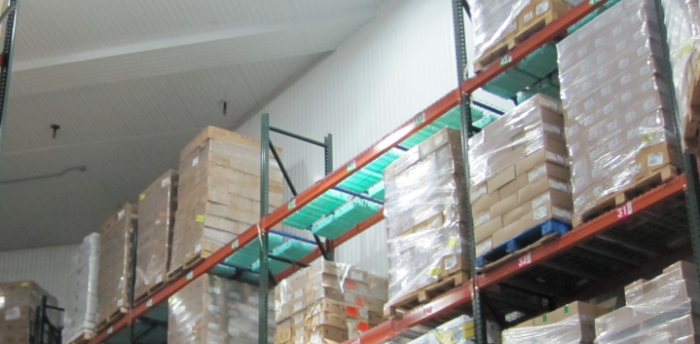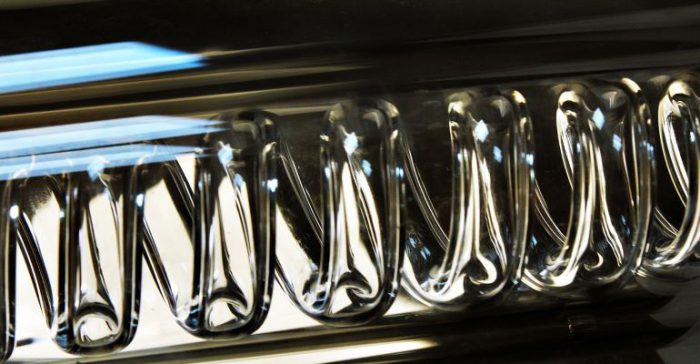Written by Max Ma, ERS
In the pre-industrial world, those seeking refuge from the blistering summer heat might have turned to ice harvested from mountain tops or caves. Such a precious form of cool technology was made obsolete with the advent of mechanical air-conditioning. However, now that electric demand charges make us sweat more than summers ever did, engineers are finding innovative ways to work with ice again. Thermal energy storage generally provides peak demand management and redundant cooling capacity for critical applications. Let’s take a look at a few thermal storage applications and where they are headed for the future.
The most common and established form of thermal storage consists of ice tanks paired with ice-making chillers. The chillers make ice during off-peak hours and remain off during on-peak hours, allowing the facility to use ice for space cooling with minimal peak demand. When the ice tanks are being charged and discharged, a glycol pump circulates a glycol solution between the ice tanks and either the chillers (charging) or the air handling units (AHUs) (discharging). This configuration is suitable for large commercial buildings with sufficient mechanical space for ice tanks, which are bulky and can be costly to install. Once installed and properly insulated, however, the ice tanks are a reliable source of cooling with expected life outlasting chillers. Besides peak demand management, the ice discharge system allows some unique energy efficiency measures, including low-flow low-temperature (LFLT) discharge. In this strategy, the AHU coils are supplied with glycol of lower temperatures than typical chilled water systems, thus allowing a lower discharge air temperature and flow rate for the same cooling load, saving on fan energy. In performing M&V on energy savings and demand reduction for ice storage systems, we need to be vigilant about facility owners who prioritize redundancy over energy savings – these systems may constantly hold ice as a redundant cooling capacity and rarely discharge ice to achieve energy or demand savings.

Recent innovations have allowed packaged RTUs to benefit from thermal storage as well. Companies such as Ice Energy provide add-on ice units that can be retrofitted to traditional rooftop units (RTUs). The ice units consist of compressors, ice tanks, and glycol pumps that come in a package roughly the same size as the RTUs they attach to. An additional glycol coil is installed in the RTU in series with the DX refrigerant coil in the supply fan section – this glycol loop connects the ice unit to the RTU. During off-peak hours, the ice unit compressors operate to fully charge the ice tank. During on-peak hours, the glycol pump circulates the glycol between the ice tank and the RTU, thus eliminating or reducing the mechanical cooling load on the RTU. Although this solution appeals to small and medium commercial buildings, it comes with obstacles of its own. As always, the facility needs to meet space and structural requirements to install the ice units adjacent to the existing RTU. The ice tank needs to be drained and conditioned seasonally for protection against freezing and microbial growth. For facilities with oversized RTUs, this solution is not cost-effective – parasitic losses from ice tank heat gain, condensation, and glycol pumping can amount to significant energy penalties.

Lest you are led to believe ice is the only medium for energy storage, let’s explore other phase-change materials (PCMs). PCMs are combinations of chemicals designed to freeze and thaw in certain temperature ranges (much like how ice freezes and thaws at 32°F) so as to absorb or release thermal energy. So far to our knowledge, PCM applications in HVAC systems – in ceiling plenums, ducts, or air-mixing chambers – have been generally unsuccessful in the Northeast, for reasons ranging from PCM weight or airflow restrictions, to unfavorable economics. However, PCMs have found successful use in large refrigerated warehouses and are being installed by companies like Viking Cold, to add thermal mass and allow compressor management strategies.

As utilities and large C&I facilities increasingly focus on demand management programs (demand response, demand limiting, etc.), we can expect thermal storage solutions to expand in the Northeast – at least until battery technologies become significantly more cost-competitive. For now, go grab a bottle of your favorite drink, dig a 10-foot hole in the ground, and bury it. And when you retrieve this nice cold drink from the good earth in the not-too-distant summer, you may remember what I told you: there is a thermal storage solution for everyone.
